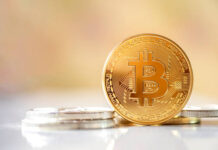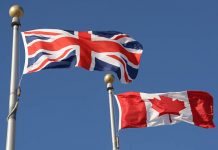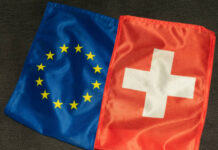Markets
Trading in core bonds and the major FX cross rates was mainly order driven this morning. With both the ECB and the Fed having entered the blackout period ahead of next week’s policy meetings and few data in Europe, markets had to rely on their own internal dynamics. After mixed (Europe) to slightly lower (US) yields yesterday, the pendulum in interest rate markets today went in the other direction with yields gaining a few basis points ahead of the publication of the advance reading of US Q4 GDP growth. Sentiment on risk remained constructive. The US economy in Q4 grew slightly faster than expected at 2.9% Q/Qa from 3.2% in Q3 and 2.6% expected. Details were mixed. Consumption contributed an ‘moderate’ 1.42 ppts to overall growth with a decline in (fixed) investment (-1.2 ppts) counterbalanced by a big contribution from inventories (1.46 ppts). Net exports also contributed in a positive way (0.56 ppt) but this occurred as a decline in imports contributed more than a smaller easing in exports subtracted from growth. The core PCE deflator at 3.9% came out exactly as expected (3.9%). At the same time, US (headline) December durable goods orders grew more than expected (mainly due to aircraft orders) while US jobless claims declined further below the 200k reference (186k). In the end, the US data were no game-changer, but good enough for core yields to stay in green. US yields are rising about 3 bps across the curve. German yields show similar changes. Still, the move clearly lacks any momentum to regain any technically relevant levels. 10-y EMU yield spreads vs German continue recent tentative bottoming/widening with Greece still the exception to the rule (-5 bps). A story of mild growth continues to please equity investors (EuroStoxx50 +0.8%; S&P500 +0.75%, Nasdaq + 1.5%). The downside for oil also looks rather well protected (brent $ 87.75 p/b).
In FX the US dollar fails to move away from recent lows even if there were no additional losses today with DXY at101.7 and EUR/USD holding near the 1.09 big figure. The yen slightly underperforms (USD/JPY 130.05, EUR/JPY 141.75) on the modest rise in core yields. Sterling is strengthening below EUR/GBP 0.88 even as CBI sales data show a uninspiring start of activity at the start of the year and little prospect for a sustained improvement in the near future. News & views
The IMF advised the Bank of Japan to take a flexible approach to controlling government bond yields. The central bank should consider the option of raising the 10y yield target and/or widening the tolerance band around it, shorten the yield curve target or shift to a quantity target of JGB purchases. Deputy managing director Gita Gopinath said upside risks to inflation in the short term are significant. If these were to materialize, the BoJ and its YCC programme could come under intense market pressure again (if not sooner; editor’s note). The BoJ tried to alleviate pressures by unexpectedly doubling the tolerance range (0% +/- 50 bps) in December. It sent shockwaves through markets, which were anticipating an exit from the ultra-easy monetary policy. The BoJ pushed back at the January meeting, by keeping policy settings unchanged and even announce an expanded programme of loans to banks to stabilize the yield curve. The Japanese 10y yield in the days after dropped to 0.4%. But more recently, and owing to an almost 5 bps increase today as well, it clawed back to the upper bound of the tolerance range.
South Africa’s central bank raised policy rates by the smallest increment of 25 bps to 7.25% following three jumbo hikes of 75 bps. Analysts expected a 50 bps increase but that move was favoured by only two out of five members. The decision was a trade-off between trying to damp inflation (7.2% headline and 4.9% core in December) but not completely flooring an economy already reeling from worsening electricity blackouts. Growth was revised lower for this year from 1.1% to a mere 0.3% and from 1.4% to 0.7% in 2024. The South African rand lost in a kneejerk reaction to the US dollar before paring gains again. USD/ZAR is currently trading around 17.12, close to opening levels.











